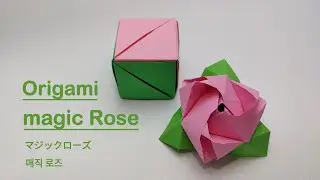Airborne Australia, Weight Shift Trike Aircraft
Airborne Australia, Weight Shift Trike Aircraft
/ lightsportandultralightflyer - Help support the Light Sport & Ultralight Flyer by becoming a Patron, contributions start at as little as $1.00 per month!
Visit - / lightsportandultralightflyer to sign up.
You can also purchase a yearly or life time subscription at http://www.ultralightflyer.com
Thank You for your support!
Design
Cosmetic appearance, structural integrity, achievement of design goals, effectiveness of aerodynamics, ergonomics.
Pros – New wing handles resoundingly better than earlier AirBorne double-surface wings. Chassis and wing both have Australian ultralight certification, a tough program that should assure buyers. As good as the better European trikes but with an Aussie touch. Test model is top-of-the-line offering; a simpler trike chassis, smaller engine, and single-surface wing can also be selected.
Cons – One drawback of certified designs is that they don’t change much and neither has the AirBorne Edge trike (though obviously their wing did change). No matter how well it’s built or how it has proved itself, many ultralight pilots are not interested in trike concept. Tailless aircraft are also foreign to many conventionally trained flyers.
Systems
Subsystems available to pilot such as: Flaps; Fuel sources; Electric start; In-air restart; Brakes; Engine controls; Navigations; Radio; (items covered may be optional).
Pros – One of the early trikes with an in-flight trim system. Though it may seem unusual to pilots accustomed to trim tabs, the trailing edge tension system is remarkably effective. In an elegant design that can never fail, fuel tank shape helps pilot check quantity. All trikes have good repair access, better than most fixed-wings. Easily found choke and other engine controls.
Cons – Trim direction indicator is not fully intuitive; label mounted awkwardly. Braking only at the nosewheel can introduce some pilot confusion while also steering (though it’s no harder than heel brakes, in my opinion). No flaps or other devices to vary speed on approach (other than the trimmer, that is). No braking from the rear seat.
Cockpit/Cabin
Instrumentation; Ergonomics of controls; Creature comforts; (items covered may be optional).
Pros – A metal-framed seat back keeps the front occupant from leaning heavily into legs of the person in back. Taking the European guide, AirBorne also uses intake silencers and exhaust systems that greatly reduce noise. Instrument panel was easier to read from the rear seat than in the past; excellent from up front. Extended control bar gives an instructor good control over student input.
Cons – Some pilots simply don’t like tandem seating and those who do may not care for the close motorcycle-like seating of the Edge. Quieter engines cost more money than noisier ones. A radio may need to be carried on your person or mounted creatively. No cargo space except some stash pockets. Seats do not adjust fore and aft. No shoulder belt up front.
Ground Handling
Taxi visibility; Steering; Turn radius; Shock absorption; Stance/Stability; Braking.
Pros – Nosewheel provides trailing link stability and modest shock absorption to make taxiing more effective. Trike maneuvering is much more versatile than fixed-wings, which can’t duck-and-weave. Very tight turn radius is possible. Tough, effective main gear suspension can absorb some rough fields or hard landings (not that I made any). Wide tires offer good traction.
Cons – Nosewheel suspension is hardly needed with trike’s loading aft much more. Footrests don’t offer much support on bumpy terrain; no heel rest. Steadying a trike wing in strong, gusty conditions isn’t much fun (but then, neither is flying in such weather). Some pilots will find it hard to adapt to the standard “wrong-way” steering even though control actions are similar to a bicycle or skis.
Takeoff/Landing
Qualities; Efficiency; Ease; Comparative values.
Pros – Trike takeoffs may look unusual but they don’t feel that way; Edge is a stout chassis that imparts a good feel for the terrain. Both seats enjoy nosewheel steering. Visibility so far below the wing (over 5 feet) yields a wide-open view in all directions except straight up. Energy retention in ground effect is good enough to make flaring easy. Good suspension and fat tires make smooth landings.
Cons – With its speedier wing, more space is necessary to take off and land the Edge/Streak. All trikes still suffer somewhat in crosswind conditions though technique has overcome much of the restriction. Control over landing approach path is limited to power use and good planning. Some conventional pilots have trouble with the chassis orientation under the wing at liftoff (swings forward).



















